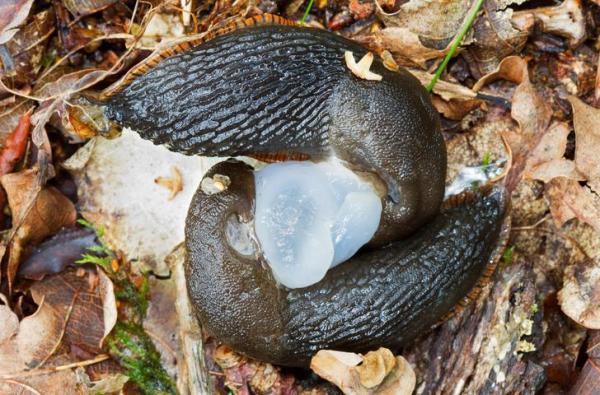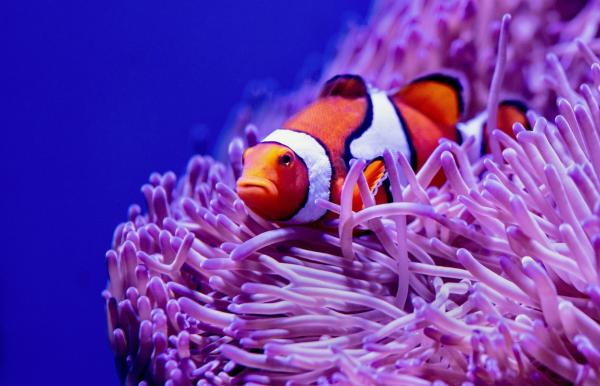
There are many interesting types of reproduction in our animal kingdom. In this AnimalWised article we're going to have a look at hermaphroditism in animals.
We'll explain what hermaphrodite animals are and include plenty of examples. We'll also look into how they reproduce and when they use this type of reproduction. Continue reading to learn more!
What is hermaphrodite in animals?
To better explain the reproduction of hermaphroditic animals, we will clarify some terms:
- Male: has male gametes.
- Female: has female gametes.
- Hermaphrodite: has male gametes and female gametes.
- Gametes: are the reproductive cells that carry genetic information, sperm and egg.
- Cross fertilization: two individuals (a male and a female) exchange gametes with genetic information.
- Self-fertilization: the same individual fertilizes its female gametes with its male gametes.
Therefore, a hermaphrodite animal is an organism that has both male and female reproductive organs. This is common in invertebrates, such as worms, slugs or snails.

Difference between cross-fertilization and self-fertilization
In cross-fertilization, when two individuals copulate, there is greater genetic variability because the genetic information of two animals is mixed.
Self-fertilization, when one individual reproduces by themselves, causes two gametes with the same genetic information to mix. This results in an identical individual, which isn't ideal in order to survive in the wild because there is no possibility of genetic improvements. Therefore, their descendants are usually weaker.
This reproductive strategy is generally used by groups of animals with slow locomotion, which makes it more difficult for them to match with other specimens of the same species. Let's put ourselves in the situation with an example of a hermaphroditic animal:
An earthworm, which is buried moving blindly through the layers of soil. When it comes time to reproduce, it cannot find another specimen of its species anywhere. And when they finally do, it may be of the same sex as them, so they would not be able to reproduce.
To avoid this problem they have developed the ability to carry both sexes inside them, so when both worms mate, they leave fertilized. However, if this earthworm goes their entire life without meeting another earthworm, they will resort to self-fertilization to ensure the survival of their species.
Can hermaphrodite animals reproduce by themselves?
As explained with the example above, yes they can. However, it is not ideal as it will result in weaker descendants. Before resorting to self-fertilization they will try to mate with another specimen, however if they have no luck, they will self-fertilize to ensure the survival of their species.
In other words, hermaphroditism is a tool to double the chances of cross-fertilization and not a tool for self-fertilization.
Types of hermaphroditic animals and their reproduction
Here is a list of hermaphrodite animals, a few examples to better understand this type of reproduction:
Earthworms
They have both sexes at the same time and, therefore, both reproductive systems have developed throughout their lives. When both worms mate, they become fertilized and then lay a bag of eggs.
Leeches
Like earthworms, they are permanent hermaphrodites.
Prawns
They are usually males at an early age and females at a mature age.
Oysters, scallops, and scallops
They also have sexual alternation. The Aquaculture Institute of the University of Santiago de Compostela is currently studying the factors that induce sex change.
Tapeworm
Their condition as an internal parasite makes it very difficult for it to reproduce with another organism. For this reason they usually resort to self-fertilization. But if they have the opportunity, they will choose to cross-fertilize with another tapeworm.
Starfish
One of the most popular hermaphroditic animals in the world is the starfish. They normally develop the male reproduction organ in juvenile phases and change to female with maturity.
They can also have asexual reproduction, which occurs when an arm breaks carrying a part of the center of the star. In this case, the star that lost the arm will regenerate it and the arm will regenerate the rest of the body. Thus giving rise to two identical individuals. Learn more in our article about how starfish reproduce.

Frogs
There are some species of frogs such as the African tree frog (Xenopus laevis) that are male in their juvenile stages and become female with adulthood. Commercial herbicides based on atrazine are rapidly changing the sex of frogs.
An experiment at the University of Berkeley in California has found that if males are exposed to low concentrations of this substance, 75% of them are chemically sterilized and 10% go directly to the female. Read more on our article about how frogs reproduce.
Fish
It is estimated that 2% of fish species are hermaphrodites, but as most live in the deepest layers of the ocean, their study is very complicated. In the coastal reefs of Panama, we have a peculiar case of hermaphroditism. The Serranus tortugarum, a fish that has both sexes developed at the same time and alternates them with its partner up to 20 times a day.
There is another case of hermaphroditism that some fish carry out and it is the change of sex for social reasons. This occurs in fish that live in colonies, a larger dominant male and a group of females. When the male dies, the larger female assumes the role of dominant male and induces a sex change. These little fish are some examples of hermaphroditic animals:
- Cleaner lordo (Labroides dimidiatus)
- Clownfish (Amphiprion ocellaris)
- Blue old lady (Thalassoma bifasciatum)
- Guppy fish (Poecilia reticulata)

Full list of hermaphroditic animals
In addition to the above species, the ones shown below are also part of the list of hermaphrodite animals:
- Slugs
- Snails
- Sea dancers
- Limpets
- Flat worms
- Ofiuras
- Trematodes
- Sea sponges
- Corals
- Anemones
- Fresh water hydras
- Amoebas
- Salmon
- Echinoderms
If you want to learn more about hermaphrodites and other types of animal reproduction, we encourage you to watch this video about intersex and hermaphroditism in the animal kingdom.

If you want to read similar articles to What Are Hermaphrodite Animals? - Definition and Full List!, we recommend you visit our Facts about the animal kingdom category.